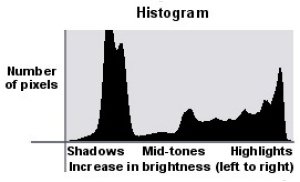
Basic Terminology
Aperture: The aperture is the hole created in the lens that lets light through to the sensor which is measured in 'f' numbers.
'AF' Mode: Is the Auto Focus Mode.
'Av' Mode: Stands for Aperture Value, allowing the user to select the desired f-stop.
'AF' Points: Stands for Auto Focus Points.
Blown Highlights: Areas of a photograph that so bright that they appear white.
Bokeh: The term for the blurred background produced when using a shallow depth of field.
CMOS: Stands for 'Complementary Metal Oxide Semiconductor' which is a type of sensor.
Depth of Field: The depth at which objects are in focus within the frame.
DSLR: Stands for Digital Single Lens Reflex.
Exposure: 'Exposure' is how much light falls on to the digital sensor.
Film Grain: Film grain is the small speckles that show up on photographs.
Histogram: A graph representation of exposure of the image.
Hot Shoe: The term for the slot on top of the DSLR which accepts the Flash gun and other accessories.
Image Sensor: The electronic chip that records the image in a digital camera.
ISO: The sensitivity of the Sensor to light, also known as 'Film Speed'.
Metadata: The information stored within the image such as date, time, shutter speed, aperture, ISO and file type.
Metering: An automatic system for determining exposure.
Purple Fringing: An unwanted purple outline around high contrast areas.
Shutter Delay: The time between pressing the shutter button and the camera taking the photograph.
Shutter Speed: The amount of time that the sensor is charged by the cameras electronics.
'Tv' Mode: Stands for Time Value Mode, allowing the user to select the desired shutter speed.
White Balance: The camera reviews, assesses and compensates for changes in colour variations ensuring the most true-to-life colours are obtained.
Basic DSLR Functions
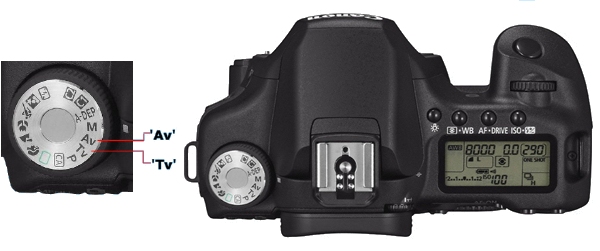 'Av' Mode
'Av' Mode
'Av' stands for "Aperture Value" which allows the user to select the f-stop (aperture) of the lens with the camera then selecting the
corresponding shutter speed. A small f-stop actually opens the lens wider and a large f-stop closes the lens.
The quality of the lens will dictate the f-stops that can be used, the better the lens the lower the f-stop. If the f-stop is set at the
lowest possible setting for the lens this will give a shallow depth of field resulting in the object being in focus and the background blurred. If the f-stop is set
higher this will give a deeper focus resulting in more of the image in focus.

 |  |
| At f/32, the background competes for the viewer’s attention. (Wikipedia) | At f/5.6, the flowers are isolated from the background. (Wikipedia) |
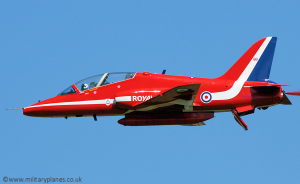 | 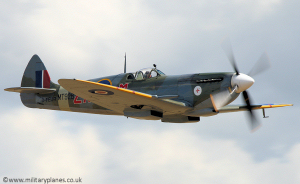 |
| Red Arrow photograph taken at 1/1000 of a second to obtain a sharp image. | Spitfire photograph taken at 1/320th of a second to show 'Prop Blur'. |


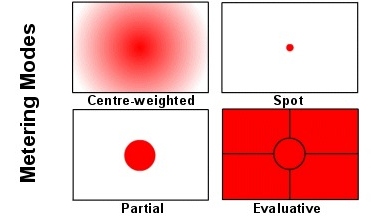
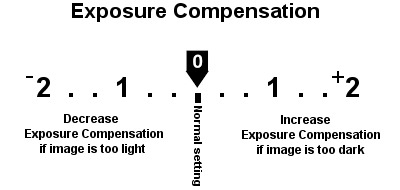
Histogram
Viewing a 'Histogram' after you take your photograph is a good way to see if the 'Exposure' is correct rather than just looking at the LCD display on the back of the camera which is quite often difficult to see outside in sunny weather.
The 'Histogram' is a graph showing how the levels of brightness are distributed in the image which can give you a good idea if it is under or overexposed.
The horizontal axis of the 'Histogram' represents the brightness, with shadows on the left, mid-tones in the middle, and highlights on the right. The vertical axis of the 'Histogram' represents the amount of pixels at that level of brightness.
This means that if the graph is bunched up to the left of the 'Histogram' then the image is most likely underexposed or if the graph is bunched up to the right of the 'Histogram' then the image is most likely overexposed.
If the graph is in the middle of the 'Histogram' and looks like a mountain then the image may well be 'Exposed' correctly. Obviously this all depends on the subject that you are shooting and an aircraft surrounded by a large expanse of white/grey sky would show the graph more to the right of the 'Histogram'.
Generally when shooting an aircraft against a bright cloudy sky then the 'Histogram' will show a peak on the graph to the right which is the sky and a smaller peak on the graph to the left which is the aircraft. It is a good idea to make sure the small peak (aircraft) is towards the middle/left of the graph and the large peak (sky) is still within the right side of the graph so that the sky isn't blown out and retains some cloud detail.
